In the modern world, financial acumen is as critical a life skill as reading or arithmetic. Yet, for too long, the education system has treated personal finance as an optional extra, if not a complete afterthought. This glaring omission leaves generations of students ill-equipped to navigate the complexities of earning, spending, saving, and investing, often leading to a cycle of debt and financial stress.
It is high time that schools recognize their pivotal role in shaping financially capable adults. A comprehensive financial literacy curriculum, integrated effectively into the educational framework, is not just beneficial—it is an absolute necessity. Below are the top money lessons schools should be prioritizing, moving beyond theoretical knowledge to practical, life-changing skills.
1. The Fundamentals of Budgeting and the ‘Needs vs. Wants’ Discipline
The cornerstone of personal finance is a sound budget. Students must learn that a budget is not a restriction but a spending plan that empowers them to control their money instead of being controlled by it. This lesson should begin early, focusing on real-world application.
- Income and Expense Tracking: Teach students to track where their money comes from (income) and where it goes (expenses). Whether using simple spreadsheets, digital apps, or the traditional envelope system, the goal is to create awareness.
- The Power of Allocation: Introduce simple budgeting rules, such as the 50/30/20 rule (50% for needs, 30% for wants, 20% for savings/debt repayment), to help students categorize and prioritize their spending.
- Wants vs. Needs: Crucially, students must grasp the tangible difference between a need (rent, basic food) and a want (designer clothing, the newest gadget). This foundational discipline is key to avoiding overspending and resisting impulse purchases driven by peer pressure or aggressive marketing.
2. The Unsung Hero: Compound Interest and Early Saving
Many young adults miss out on the incredible power of compound interest simply because they don’t understand it until it’s too late. Schools should demystify this concept, positioning it as the ultimate wealth-building tool.
- Compounding in Action: Use clear, engaging examples to demonstrate how money grows exponentially over time when both the principal and the accumulated interest earn interest. Show the dramatic difference between starting to save $\$100$ a month at age 18 versus age 30.
- The ‘Pay Yourself First’ Mentality: Instill the habit of saving before spending. Teach students to treat their savings contribution as a non-negotiable fixed expense, automatically transferring a portion of any income (from an allowance or a part-time job) into a dedicated savings or investment account.
- Defining and Building an Emergency Fund: Explain that financial security requires a safety net. Students should learn the importance of setting aside 3-6 months’ worth of living expenses in an easily accessible emergency fund to avoid debt when life throws an unexpected curveball.
3. Demystifying Debt, Credit, and the Credit Score
Debt—especially high-interest consumer debt—can cripple a young person’s financial future before it even starts. The school curriculum must provide a comprehensive, unbiased view of borrowing.
- Good Debt vs. Bad Debt: Clarify the distinction between good debt (e.g., a low-interest mortgage, student loan for a high-return degree) and bad debt (e.g., credit card debt for depreciating assets, payday loans).
- The Credit Score Conundrum: Explain what a credit score is, why it matters (for renting, insurance rates, and loan terms), and, most importantly, how to build a positive credit history responsibly. This includes paying bills on time, keeping credit utilization low, and the dangers of co-signing.
- Understanding Loan Terms: Students must be able to calculate and compare Annual Percentage Rate (APR) and understand the total cost of borrowing a sum of money, including fees and interest, over the loan’s lifetime.
4. The Basics of Investing and Risk Management
Financial stability eventually transitions into wealth accumulation, a process driven by smart investing. Schools need to move beyond “saving” to “growing” money.
- Investing 101: Introduce basic investment vehicles like index funds, mutual funds, and stocks, emphasizing a long-term, diversified approach. The focus should be on time in the market rather than timing the market.
- The Concept of Risk Tolerance: Teach students how to assess their own risk tolerance and understand the risk/reward trade-off. Explain the principle of diversification—not putting all your eggs in one basket—as a key strategy for managing risk.
- Retirement Planning: Starting Early: While retirement seems a lifetime away for a student, this is precisely when the benefits of compound interest are most potent. Introduce concepts like 401(k)s and Roth IRAs, highlighting how early contributions can lead to a secure retirement.
5. Navigating Real-World Financial Decisions: Taxes, Insurance, and Identity
Personal finance is interconnected with law and government, and students need a basic grounding in these areas.
- Taxes Made Simple: Teach the fundamentals of income tax, payroll deductions (Social Security, Medicare), and how to read a paycheck stub. A basic simulation of filling out a tax form can demystify the annual process.
- Insurance as Protection: Explain the purpose of different types of insurance (health, car, renter’s, life) as a form of risk management, not a luxury. Students should learn to weigh deductibles and premiums.
- Digital Financial Safety: In an increasingly digital world, lessons on avoiding online scams, recognizing phishing attempts, protecting sensitive personal data, and safeguarding against identity theft are crucial for financial survival.
Implementation: The Way Forward
For these lessons to be effective, they must be taught through practical, experiential learning. Instead of just lectures, schools should incorporate:
- Real-World Simulations: Use budgeting games, stock market challenges, and simulated scenarios for buying a car or renting an apartment.
- Integration: Embed financial concepts into existing subjects—using interest rate calculations in math class or discussing the economic impact of tax policies in social studies.
- Mandatory Requirement: Personal finance should be a mandatory, standalone course taken by all students before graduation, taught by educators who are themselves financially literate and comfortable with the material.
By embracing these top money lessons, schools can move beyond their traditional role and become powerful engines for generating not just knowledge, but genuine, lifelong financial capability, fundamentally changing the future well-being of their students.



